What is full body strength training: Strength training, also referred to as weight training or resistance training, is an important part of any health routine. It helps make you stronger and also builds muscle endurance.
With strength training, you progress your body against some sort of resistance, such as:
- your body weight
- free weights, like dumbbells or barbells
- resistance bands, also referred to as resistance tubing or workout bands
- resistance machines, like cable machines, single-exercise machines, or multi-gym techniques
Strength training is a flexible sort of workout that you are able to do virtually anyplace. While it’s a popular exercise possibility at many gyms, you may also construct a strong strength training program that you are able to do in the consolation and privateness of your home.
This article will show you how to perceive what you could get began with an at-home strength training routine, together with examples of exercises that you may include in your workout plan.
Table of Contents
What are the benefits of strength training?
Research has proven that strength training can benefit your health and health in many various methods. According to the Mayo Clinic, strength training might assist:
- construct lean muscle mass
- reduce body fat
- burn calories extra effectively, even after you’ve exercised
- boost metabolism and make weight loss simpler
- increase bone density and improve bone health
- boost flexibility and improve range of movement
- improve brain health and cognitive features
- reduce the signs of many chronic conditions, including back pain, diabetes, arthritis, and heart disease
- improve posture, balance, and stability
- elevate energy levels
- improve mood and general sense of well-being
What are the benefits of working out at home?
A home-based exercise routine could be a super easy and handy way of becoming in a workout with out having to hit the gym.
Benefits
- It saves time. There’s no touring or ready for machines or gear.
- It’s low value. There aren’t any gym charges or costly gear wanted.
- Work out anytime. You can exercise by yourself schedule, regardless of the time of day or night time.
- Privacy. You can work out with out feeling self-conscious.
- Go at your personal pace. There’s no pressure to keep up with these round you or to push your self past what’s comfy.
Getting began
Once you’re prepared to start out placing together your strength training workout, step one is to discover a place in your home the place you may exercise comfortably. You’ll wish to discover an space that has enough room for you to move your arms and legs freely.
You don’t want to take a position in much gear, but for those who do wish to buy a number of items, listed below are some that could be useful:
- an exercise mat
- resistance bands or tubing
- dumbbells
- a kettlebell
- a stability ball
- a medication ball
Instead of using dumbbells or a kettlebell, you may improvise by using water bottles, sandbags, or canned goods in place of the weights.
If you’re simply getting began with strength training, it’s possible you’ll wish to discover a strength training workout for novices on-line. This can assist you learn to do totally different exercises with the proper kind, and also heat up and settle down accurately.
Start with a warmup
Before beginning your workout, do a warmup routine for at the least 5 to 10 minutes. This can include brisk walking, jogging on the spot, or actions that work your legs, arms, and different main muscle teams.
Bodyweight strength training exercises
Once your muscle groups are warmed up and prepared to move, you can begin by doing a sequence of body weight exercises.
You don’t want any gear for body weight exercises, besides an exercise mat if the ground is too hard.
With every of these exercises, use smooth, regular, and managed actions.
Lunges
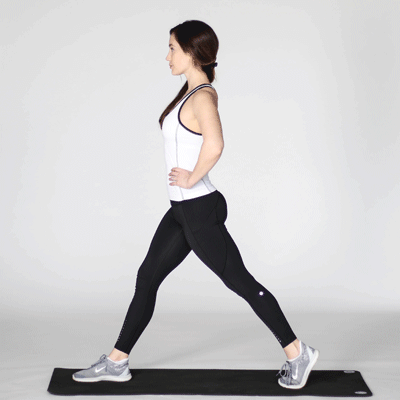
A fundamental lunge works the muscle groups in your lower body, including your quadriceps, hamstrings, glutes, and calves.
To do that exercise:
- Start by standing up tall, ft shoulder-width aside.
- Step ahead along with your proper foot, and lower your hips towards the ground till your proper leg is at a 90-degree angle and your left knee is parallel to the ground. Make positive your entrance knee doesn’t transcend your toes.
- Lengthen your backbone to keep your torso upright.
- Hold this place for five seconds or longer.
- Then step your proper foot again to fulfill your left, and repeat this motion along with your left leg.
- Repeat 10 to 12 times, then relaxation briefly and do one other set.
Lunge variations include walking lunges, jumping lunges, lunges with a torso twist, and side lunges.
Squat to overhead elevate
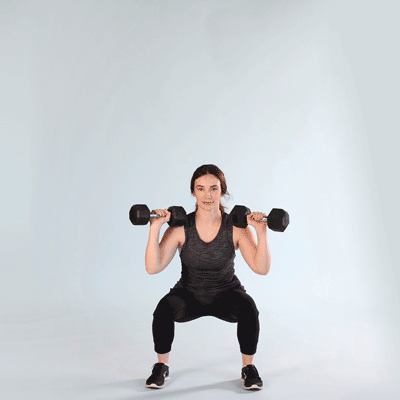
If you’re new to strength training, begin off by elevating your arms overhead with none weight. Once you are able to do this exercise with good kind, you may add gentle dumbbells, and increase the weight as you construct strength.
This exercise not only works your glutes and leg muscle groups, it also works the muscle groups in your core, again, and shoulders, in addition to your triceps.
To do that exercise:
- Stand along with your ft barely wider than your hips and your arms alongside your body.
- Slowly lower your hips down right into a squat place.
- Press as much as come again into standing and elevate your arms overhead.
- Return to the beginning place.
- Do 1–3 units of 8–12 repetitions.
Planks

Planks are an glorious exercise for improving your core strength and stability. This exercise can also strengthen the muscle groups in your again, chest, and shoulders.
To do that exercise:
- Rest in your forearms and toes only, keeping your body in a straight line along with your buttocks clenched and your stomach muscle groups engaged.
- Try to hold this place for 30 seconds. If that’s too hard, begin with 20 seconds.
- As you gain strength and health, try to hold the plank place for 1 minute or longer.
Once you’re prepared for a tougher model of the plank, you may try lifting one leg at a time while you’re holding the plank place.
Pushups
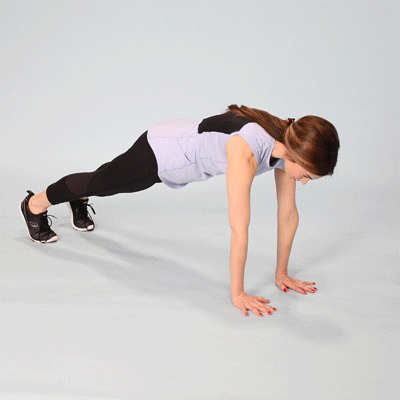
Standard pushups work the chest muscle groups (pectorals), in addition to the shoulder muscle groups, triceps, and abdominals.
To do that exercise:
- Start in a plank place along with your palms straight under your shoulders.
- Keeping your again flat and bracing your core, lower your body by bending your elbows till your chest virtually touches the ground.
- Immediately push your body again as much as the beginning place.
- Repeat 8–12 times. Start with 1–2 units, and construct as much as 3 units as you get stronger.
A much less difficult model of the pushup could be done by placing your weight in your knees instead of your toes.
More difficult pushup variations include plyo pushups, close stance pushups, and decline pushups.
Free weight exercises
The following two exercises use dumbbells. Start with a 5-pound dumbbells. As you construct up your strength, you may change to using 8- or 10-pound dumbbells.
You can also use canned goods or water bottles in place of dumbbells. Just make sure to grip them firmly to keep away from injury.
Dumbbell shoulder press
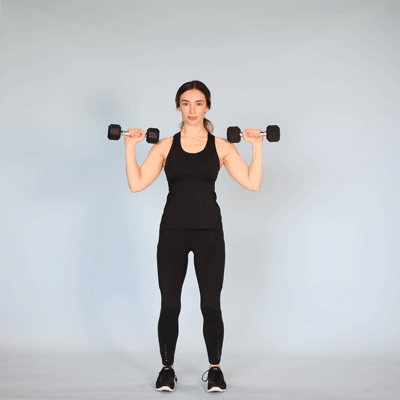
This exercise targets the muscle groups in your shoulders and arms, and can also strengthen your core and chest muscle groups.
To do that exercise:
- Stand along with your ft shoulder-width aside.
- Pick up the dumbbells and elevate them to shoulder height. Your palms can face ahead or towards your body.
- Raise the dumbbells above your head till your arms are totally prolonged.
- Pause in this place for a number of seconds, and then convey the dumbbells again to shoulder height.
- Do 1–3 units of 8–12 repetitions.
Dumbbell triceps kickback
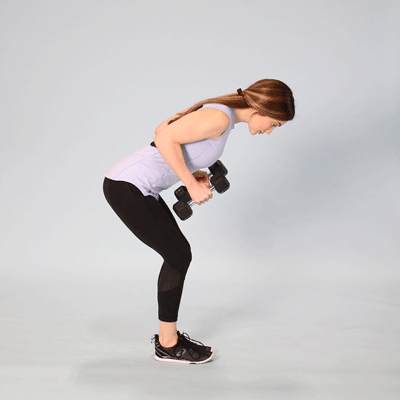
This exercise works your triceps in addition to your shoulder muscle groups.
To do that exercise:
- Grab two dumbbells and hold one in every hand.
- Bend your torso at a 45-degree angle, and bend your elbows so that they kind a 90-degree angle.
- Then straighten your arms out straight behind you, partaking your triceps as you go.
- You can both do one arm at a time, or each together.
- If you’re a newbie, begin with 1–2 units of 8–12 reps, and construct as much as 3 units as you get stronger.
Resistance band exercises
Resistance bands are one other nice tool to your strength training workout. They’re light-weight and versatile, and a 2010 studyTrusted Source has proven they work your muscle groups simply in addition to free weights or weight machines.
Resistance band pull aside
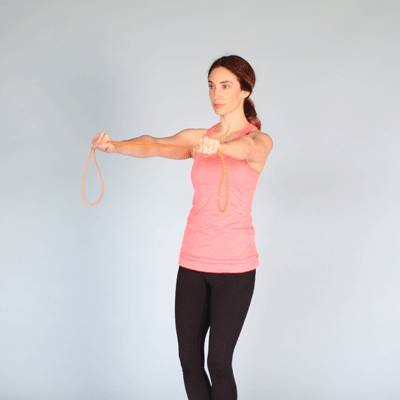
This exercise works the muscle groups in your again, shoulders, and arms.
To do that exercise:
- Stand along with your arms prolonged out in entrance of you at chest height.
- Hold a resistance band tautly with each arms. The band should be parallel to the ground.
- Keeping your arms straight, pull the band towards your chest by shifting your arms outward to your sides. Initiate this motion out of your mid-back.
- Squeeze your shoulder blades together, and keep your backbone straight, then slowly return to the beginning place.
- Do 1–3 units of 15–20 reps.
Hip extension
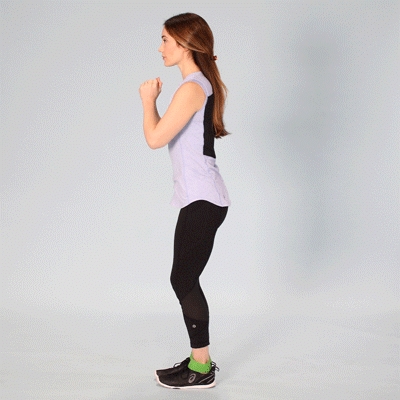
This exercise works the muscle groups in your hips and legs. You’ll want a light- to medium-resistance band to do that exercise.
- Loop the resistance band round each your ankles. You can use a chair or wall for balance.
- Keeping a straight line in your body, pull your left leg again so far as you may, keeping it as straight as possible.
- Slowly return to the beginning place.
- Complete 12 reps along with your left leg, then repeat along with your proper leg.
- Complete 2 units on every side to start out, and work as much as doing 3 units as you construct up your strength.
Resistance band leg press
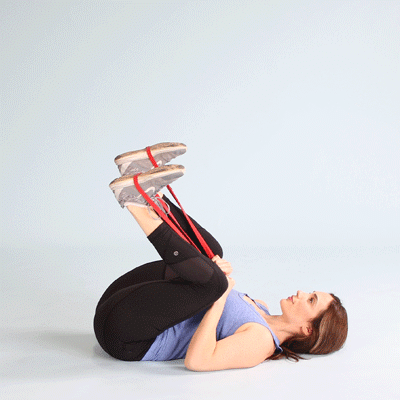
This exercise works your quadriceps, hamstrings, calves, and glutes. Like a leg press on a weight machine, this exercise makes you’re employed against gravity.
- Lie in your again and carry your ft off the ground.
- Bend your knees, making a 90-degree angle. Flex your ft, pointing your toes upward.
- Wrap the resistance band round your ft and hold the ends.
- Press your ft against the bands till your legs are totally prolonged.
- Bend your knees to return to a 90-degree angle.
- Do 1–3 units of 10–12 reps.
How to chill down
Finish your workout by cooling down for about 5 to 10 minutes. This permits your breathing and heart rate to transition right into a resting state. Options include walking on the spot and gentle stretches.
The bottom line (What is full body strength training)
Doing 30 to 45 minutes of strength training two to a few times every week is an glorious way of building lean muscle mass, burning calories, and boosting your metabolism. This, in flip, can assist you burn body fat and make weight loss simpler.
In addition, strength training can strengthen your bones and joints, lower your risk of chronic diseases, improve flexibility, posture, and balance, and boost your mood and energy levels.
Many strength training exercises could be done in the consolation and privateness of your home, using simply your body weight or fundamental, low-cost gear as resistance.
If you will have any health issues or an injury that makes exercising difficult, discuss to your doctor or a certified private coach before you begin an at-home strength training routine.
- Read more: Can I lose 10 pounds in one month?
- Read more: Is it bad to want to lose weight fast?
- Read more: 9 health benefits of vegetables legumes and beans
- Read more: 6 Best candy for weight loss – Science based
Pros:
- Powerhouse Muscles:
- Pro: Full body strength training engages multiple muscle groups simultaneously, turning you into a bona fide powerhouse.
- Con: Saying goodbye to the elevator because now you’ll be taking the stairs with newfound enthusiasm. Who needs a lift when your glutes can power you up?
- Calorie Cruncher:
- Pro: Burn, baby, burn! Full body strength training is a calorie-crunching extravaganza, making those extra slices of pizza cry for mercy.
- Con: Your favorite couch might get a bit lonely as you trade TV time for squats. But hey, who needs Netflix when you’ve got quads of steel?
- Balanced Bod:
- Pro: Achieve the symmetrical magnificence of a Greek statue as full body strength training ensures every muscle gets its fair share of attention.
- Con: Figuring out which side is your “good side” in photos becomes a Herculean task. But hey, at least both sides are looking fabulous!
- Time Savior:
- Pro: Say adios to hours in the gym. Full body strength training is the superhero of efficiency, giving you more time for life’s important activities—like contemplating the meaning of italiclifeitalic.
- Con: Getting out of bed might feel like a secret mission, thanks to those sore muscles. But who needs a morning jog when your bedroom becomes an obstacle course?
- Functional Fitness:
- Pro: Real-world strength! Full body workouts prepare you for any physical challenge life throws at you. Suddenly, opening that stubborn pickle jar is a piece of cake.
- Con: Goodbye, feeble excuses! Now, lifting grocery bags feels like a warm-up. The cashier won’t know what hit them when you effortlessly carry all those snacks to the car.
Cons:
- Sweat Symphony:
- Pro: Your body’s own symphony of sweat, proving that hard work and determination are the keys to a successful workout.
- Con: Say hello to a new accessory – the “glisten.” You’re not sweating; you’re sparkling. Who needs diamonds when you’ve got workout bling?
- Delayed Gratification:
- Pro: Building strength takes time, like waiting for a cake to bake. But instead of cake, you get biceps. Sweet deal!
- Con: Patience, grasshopper. Your muscles might be fashionably late to the growth party. Just remember, Rome wasn’t built in a day, and neither are biceps.
- Equipment Enigma:
- Pro: Full body strength training can be done anywhere, even in your living room. No gym membership? No problem!
- Con: Explaining to your neighbors why you’re bench-pressing the coffee table might be a tad awkward. Maybe invest in a yoga mat – less furniture-moving involved.
- Injury Interference:
- Pro: Build strength, not injuries! Full body training promotes balanced development, reducing the risk of overworked, grumpy body parts.
- Con: Accidentally pulling a muscle during an enthusiastic jumping jack might make you question your coordination. But who needs perfect form when you can dance like no one’s watching?
- Routine Redundancy:
- Pro: Consistency is the key to success. Full body strength training ensures you’re working all the right buttons regularly.
- Con: Feeling like a broken record, explaining to your friends why you’re constantly talking about your workout routine. But hey, if they’re not tired of hearing about it, are they even your friends?
People also ask
What are 4 exercises for full body strength?
Looking to turn your noodle arms into steel spaghetti? Try these four full-body strength exercises that’ll have you flexing muscles you didn’t even know existed!
Deadlift Disco:
Picture this: You, holding a barbell, lifting it like you’re about to drop the hottest album of the year. It’s the deadlift disco, where your back, hamstrings, and glutes get down and boogie.
Squat Symphony:
Get ready for the squat symphony! It’s like a Broadway show for your quads and booty. Drop it low and rise like you’re accepting an award for the Best Legs in a Lead Role.
Push-Up Palooza:
Cue the push-up palooza! Forget handshakes; now your chest, triceps, and shoulders are the life of the party. It’s like a social gathering, but your muscles are doing all the mingling.
Rowing Rhapsody:
Time for a rowing rhapsody! Grab a dumbbell, pull it towards you like it owes you money. Your back muscles join the orchestra, creating a symphony of strength. Who knew rowing could be so melodious?
Get ready to sculpt a body that could make Hercules jealous, all while having a laugh and breaking a sweat. It’s like a workout comedy show – just with more gains and fewer punchlines! Flex on, my friend.
Is full body strength training good?
Absolutely! Full body strength training is the superhero of workouts, tackling flimsy muscles from head to toe. It’s like sending an army of power builders to every nook and cranny of your body, turning you into a fortress of strength. No more favoritism – every muscle gets its share of love, creating a symphony of gains. It’s like a buffet for your body; why settle for just biceps when you can have the whole muscle feast? Plus, you get to discover muscles you never knew existed – surprise, surprise! It’s the ultimate fitness fiesta, where every squat and lift is a step closer to becoming the superhero version of yourself. Ka-pow!
What is the best full body strength exercise?
Drumroll, please! The crowned jewel of full-body strength exercises is the mighty deadlift! It’s like the royal gala of workouts, engaging muscles from your toes to your nose. Picture lifting a loaded barbell off the ground – it’s the ultimate power move. Your back, glutes, and hamstrings join forces, turning you into a lifting legend. It’s the closest thing to becoming a real-life superhero – minus the cape. Forget about complex workout routines; the deadlift is the boss move, the heavyweight champion of the fitness world. It’s so good; even gravity takes a moment to applaud. Bow down to the deadlift greatness!
